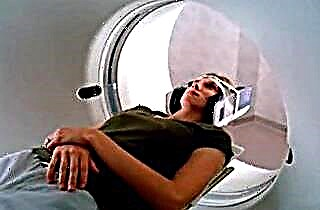Symptoms of a cyst of the maxillary sinus appear only if the neoplasm begins to grow. The results of statistical studies confirm that this disease occurs in every 10 inhabitants of the planet, but it is found quite rarely. It is possible to identify a violation only with the help of special diagnostic devices, and its symptoms are very similar to other ailments. Timely diagnosis is necessary in the case of cysts formation, as they can cause serious complications.
Features of neoplasms
 The maxillary sinuses are the airways in the facial skull, they are connected to the nose with fistulas. The inner surface is lined with a mucous membrane that produces a secret that performs a protective and moisturizing function. This mucus is produced by special glands equipped with ducts. When the upper airways succumb to severe and frequent irritation, these ducts can become clogged or even become overgrown. In this case, the secret begins to accumulate near the glands, forming a small elastic ball with liquid contents. These are the cysts of the maxillary sinuses.
The maxillary sinuses are the airways in the facial skull, they are connected to the nose with fistulas. The inner surface is lined with a mucous membrane that produces a secret that performs a protective and moisturizing function. This mucus is produced by special glands equipped with ducts. When the upper airways succumb to severe and frequent irritation, these ducts can become clogged or even become overgrown. In this case, the secret begins to accumulate near the glands, forming a small elastic ball with liquid contents. These are the cysts of the maxillary sinuses.
Types of cysts:
- true - are formed near the glands, have an upper shell and an inner one, the latter produces mucus;
- false - do not contain an inner shell and do not secrete a secret, occur most often against the background of inflammation of the teeth of the upper jaw or allergic reactions, can disappear by themselves if the cause of their appearance is eliminated.
The inside of the cysts may contain clear mucus, serous fluid, or pus. The filling depends on the stage of the disease, its type and location. A cyst is not an oncological disorder, it does not give metastases, therefore it is not considered very dangerous to health.
However, when it sharply increases in size, serious violations are possible. If you do not recognize the disease in time, then it will affect nearby organs and tissues.
Diagnostic problems
It is not so easy to identify this ailment in the early stages. A cyst of the maxillary sinus may not cause symptoms at all. This is because the neoplasm is small (up to 1.5 cm), it fits in the cavity of the sinus, does not overlap or violate its function. Accordingly, the patient does not feel any signs of the disease. Violation can only be identified randomly. Even on an X-ray, it is not always possible to see the ball if it is small. More accurate and effective research methods are:
 CT and MRI. Computed tomography and magnetic resonance imaging can detect even small tumors. Also, these studies show the location of the neoplasms and help to accurately determine their size.
CT and MRI. Computed tomography and magnetic resonance imaging can detect even small tumors. Also, these studies show the location of the neoplasms and help to accurately determine their size.- Endoscopic examination. With the help of a miniature camera, which is equipped with an endoscope, the doctor can see not only the neoplasm, but also the entire nasal cavity and sinuses, and determine the anatomical features of the structure of these organs.
After conducting hardware and laboratory studies, you can make an accurate diagnosis and decide what to do next with the neoplasm. If it is small and does not disturb the patient, regular observation by an otolaryngologist and preventive measures are indicated. However, tumors larger than 1.5 cm require removal or medication.
In most cases, drug therapy does not give positive results, therefore it is best to immediately use surgical intervention.
Signs of the disease
When the cyst grows in size, it begins to show signs of its existence. The patient is faced with discomfort, but they can be a manifestation of many other diseases, because the tumor is thought of last. Consider what symptoms indicate the presence of a neoplasm.
- Breathing problems. Since the cyst is located in the air maxillary sinus, its growth can partially or completely block the flow of oxygen. In this case, the patient feels nasal congestion, cannot normally take a deep breath, this symptom is especially pronounced in the supine position.
 Pain syndrome. Most often, pain is felt exactly at the site of the lesion, it becomes pronounced when pressing on the cheek in the maxillary sinus area. However, in some cases, the pain syndrome may radiate to the eye socket or temple area. In advanced situations, the patient's whole head hurts.
Pain syndrome. Most often, pain is felt exactly at the site of the lesion, it becomes pronounced when pressing on the cheek in the maxillary sinus area. However, in some cases, the pain syndrome may radiate to the eye socket or temple area. In advanced situations, the patient's whole head hurts.- Swelling of the face. Edema manifests itself frontally, most often only one sinus is affected - left or right. Accordingly, only one half of the face swells. There may be swelling of the upper and lower eyelids.
- Allocations. The mucus comes out of the nostril near which the affected airway is located. The discharge is often scarce, at first they are transparent, but when a bacterial infection is attached or a cyst is opened, it becomes purulent and abundant. The contents of the cysts drain not only into the nostrils, but also into the pharynx.
- Chronic inflammation. A cyst in the maxillary sinus gives symptoms similar to sinusitis and rhinitis. Due to constant irritation of the mucous membrane, its inflammation develops, which leads to a painful condition. This symptom is also characterized by the fact that doctors diagnose an increased body temperature with it.
- Smell disorder. In an advanced stage, the work of the olfactory center located in the nasal cavity may be disrupted. The patient loses the sense of smell in whole or in part. In some cases, it can be restored, and sometimes it is unrealistic even after surgery.
- Visual impairment. An infection developing in the maxillary sinus can negatively affect the optic nerve. This causes visual impairment, in some cases, the patient has double vision. This violation can be corrected only by eliminating the neoplasm.
- Dizziness and shortness of breath. The cyst disrupts the aeration in the maxillary sinus, and this makes it difficult to oxygenate all cells of the body, including the brain. With oxygen deprivation, the patient feels weak, dizzy, shortness of breath appears.
- General intoxication. If a cystic ball filled with purulent contents ruptures, the infection spreads throughout the body. Bacteria release toxins that poison organs and tissues, the patient feels a general breakdown, he is weakened, he cannot lead the usual way of life.
Unpleasant consequences and risks
 Patients are interested in whether a cyst can cause serious complications. The answer to this question will be individual for everyone. The time and intensity of the growth of the neoplasm, its symptoms and the ability to resorb depends only on the organism of a particular patient. However, you should not ignore the signs of the disease, especially if it has already been diagnosed. In some cases, the violation is completely harmless, and sometimes it has serious consequences.
Patients are interested in whether a cyst can cause serious complications. The answer to this question will be individual for everyone. The time and intensity of the growth of the neoplasm, its symptoms and the ability to resorb depends only on the organism of a particular patient. However, you should not ignore the signs of the disease, especially if it has already been diagnosed. In some cases, the violation is completely harmless, and sometimes it has serious consequences.
The rapid increase in cysts in volume is dangerous because they squeeze the bones of the skull and deform them. There is also rejection and decomposition of bone tissue, the transition of infection to the eyes and its spread to nearby organs.
However, the worst case scenario can be sepsis and meningitis. Such lesions are possible if the infection from the opened neoplasm enters the bloodstream. To prevent such violations, immediately after detecting the first signs, ask the doctor a question about diagnostic procedures.
In conclusion
The cyst of the maxillary sinus manifests itself in different ways, and in some cases does not cause any symptoms at all. The similarity of its signs with the signs of other diseases significantly complicates the diagnosis. However, an experienced otolaryngologist can detect a neoplasm using modern devices and laboratory tests.
If the patient has serious problems caused by the tumor, surgery is performed. Only surgical intervention gives a 100% guarantee that the problem will be eliminated.

 CT and MRI. Computed tomography and magnetic resonance imaging can detect even small tumors. Also, these studies show the location of the neoplasms and help to accurately determine their size.
CT and MRI. Computed tomography and magnetic resonance imaging can detect even small tumors. Also, these studies show the location of the neoplasms and help to accurately determine their size. Pain syndrome. Most often, pain is felt exactly at the site of the lesion, it becomes pronounced when pressing on the cheek in the maxillary sinus area. However, in some cases, the pain syndrome may radiate to the eye socket or temple area. In advanced situations, the patient's whole head hurts.
Pain syndrome. Most often, pain is felt exactly at the site of the lesion, it becomes pronounced when pressing on the cheek in the maxillary sinus area. However, in some cases, the pain syndrome may radiate to the eye socket or temple area. In advanced situations, the patient's whole head hurts.

